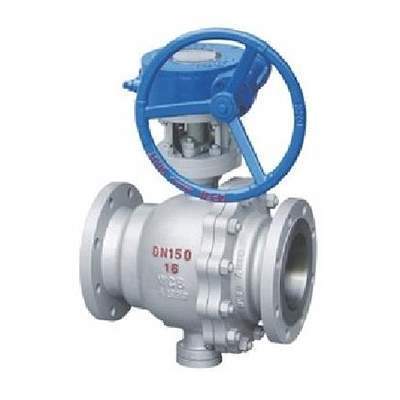Welcome to My Blog!
Before we dive into the content, if you’re interested in our products or have any questions, please feel free to visit our Contact Us page on the website. Our team is ready to assist you with inquiries, orders, or any support you may need.
Now, let’s get started on our journey together. I hope you find the content here insightful, engaging, and valuable.
Valves are essential components in industrial piping systems, controlling the flow of liquids, gases, or slurries. Among the most commonly used valves are plug valves and gate valves. Although both serve as on/off devices, they differ significantly in design, operation, and application. Understanding these differences is critical to selecting the right valve for your system, improving efficiency, reducing maintenance, and ensuring long-term reliability.
What Is a Plug Valve?

A plug valve is a quarter-turn valve that uses a cylindrical or conically tapered plug to regulate fluid flow. The plug contains one or more hollow passageways (ports) that allow fluid to pass when aligned with the pipeline. Rotating the plug 90 degrees fully opens or closes the valve.
Key Features:
- Compact and simple design with minimal moving parts
- Quick operation with a quarter-turn
- Tight shutoff suitable for high-pressure and high-temperature systems
- Capable of handling viscous, abrasive, or corrosive fluids
Plug valves are especially valuable in industrial environments where fast on/off operation, low maintenance, and reliable sealing are required. They are also commonly used in multi-port configurations, allowing flow diversion without multiple valves.
What Is a Gate Valve?

A gate valve is a linear-motion valve that uses a flat or wedge-shaped gate to control flow. The gate moves perpendicular to the flow path, either opening fully or closing completely. Gate valves are often used in pipelines where minimal pressure drop and long-term isolation are priorities.
Key Features:
- Full-bore design allows unobstructed flow when fully open
- Linear movement provides precise open/close positions
- Suitable for liquids, gases, and some slurry applications
- Often used for long-term shutoff and isolation in industrial pipelines
Gate valves are ideal for applications where flow is infrequent and system reliability is prioritized over speed of operation.
Design Differences Between Plug and Gate Valves
| Feature | Plug Valve | Gate Valve |
|---|---|---|
| Operation | Quarter-turn | Linear (up/down) |
| Sealing Mechanism | Cylindrical/conical plug vs valve body | Wedge or flat gate vs valve seat |
| Flow Control | Minor throttling possible, primarily on/off | Strictly on/off, not suitable for throttling |
| Maintenance | Easy to disassemble and maintain | Larger valves can be complex to service |
| Size & Weight | Compact and lighter | Typically larger and heavier |
| Abrasion Resistance | Excellent with slurries and viscous fluids | Wears faster with abrasive media |
These structural differences affect installation, operation speed, and suitability for specific industrial applications.
Performance Comparison
Flow Efficiency
- Plug Valve: Full port designs allow minimal pressure drop, while reduced port designs may slightly restrict flow.
- Gate Valve: Full-bore design ensures minimal resistance, making it suitable for pipelines requiring unobstructed flow.
Operating Speed
- Plug Valve: Quick quarter-turn operation is ideal for systems needing frequent shutoff.
- Gate Valve: Slower operation due to linear movement; not suitable for rapid on/off applications.
Maintenance Requirements
- Plug Valve: Simple design with fewer parts makes maintenance easier. Lubricated types require periodic sealing, while non-lubricated types need minimal upkeep.
- Gate Valve: Larger size and multiple components may require more labor for inspection and repair, especially for high-pressure pipelines.
Durability
- Plug Valve: Resistant to wear from abrasive fluids, but improper lubrication can lead to sticking.
- Gate Valve: Durable for infrequent operation, but gate and seats can wear quickly under abrasive media.
Advantages of Plug Valves
- Quick and easy quarter-turn operation
- Compact size and lighter weight for easier installation
- Reliable sealing performance for high-pressure applications
- Handles abrasive, viscous, and corrosive fluids efficiently
- Suitable for multi-port applications and flow diversion
Advantages of Gate Valves
- Full-bore design minimizes pressure drop
- Provides long-term isolation and tight shutoff
- Robust and reliable for high-pressure pipelines
- Cost-effective for larger diameters
- Suitable for infrequent operation, reducing wear from constant cycling
Disadvantages to Consider
Plug Valve
- Limited throttling capability; best for on/off operation
- Lubrication required for some designs
- Potential to seize if debris enters the valve
- High torque needed for larger sizes
Gate Valve
- Slow operation compared to quarter-turn valves
- Not ideal for frequent cycling
- Larger and heavier, requiring more space and support
- Abrasive or slurry fluids can accelerate wear on gate and seats
Applications and Use Cases
Plug Valve Applications:
- Oil and gas pipelines requiring fast shutoff
- Chemical plants handling corrosive or viscous fluids
- Water and wastewater systems for sludge or abrasive media
- HVAC systems for flow switching or isolation
- Multi-port flow diversion in industrial plants
Gate Valve Applications:
- Water supply pipelines and treatment plants
- Power plants and steam systems
- Oil and gas pipelines for long-term isolation
- Industrial systems with clean fluids and infrequent operation
Understanding the operational environment is key to determining which valve type is most suitable.
How to Choose Between Plug and Gate Valves

When selecting a valve, consider these factors:
- Flow Control Needs: Fast on/off or full-bore isolation?
- Fluid Type: Abrasive, viscous, or corrosive fluids favor plug valves.
- Operating Frequency: Frequent operation favors plug valves; infrequent favors gate valves.
- Space and Installation: Compact spaces may require plug valves.
- Maintenance Considerations: Plug valves are generally easier to maintain.
- Pressure and Temperature Requirements: Check manufacturer specifications for high-pressure/high-temperature applications.
- Cost Considerations: Gate valves may be more economical for large-diameter pipelines, while plug valves offer operational advantages in challenging environments.
Conclusion
While both plug valves and gate valves are essential for controlling fluid flow, their design and performance characteristics suit different applications. Plug valves excel in quick shutoff, handling harsh or abrasive fluids, and offering flexibility for multi-port systems. Gate valves are ideal for long-term isolation and full-bore flow applications with infrequent operation. Selecting the correct valve type ensures system efficiency, safety, and longevity.
FAQ
What is the main difference between a plug valve and a gate valve?
A plug valve uses a cylindrical or conical plug for quarter-turn operation, while a gate valve uses a wedge-shaped gate that moves linearly to open or close flow.
Which valve is better for quick on/off applications?
Plug valves are ideal for fast on/off operation due to their quarter-turn design, whereas gate valves are slower and better for infrequent isolation.
Can plug valves handle abrasive or viscous fluids better than gate valves?
Yes, plug valves are more resistant to abrasive or viscous fluids, making them suitable for sludge, slurry, and chemical services.
Are gate valves suitable for throttling flow?
No, gate valves are designed strictly for on/off operation and are not recommended for throttling or precise flow control.
How do maintenance requirements compare between plug and gate valves?
Plug valves are generally easier to maintain due to fewer parts and simpler disassembly, while gate valves may require more effort, especially in larger sizes or high-pressure systems.
Need Help Choosing Between Plug and Gate Valves?
If you’re unsure which valve is best for your application, our experts can guide you. Contact us today for a personalized consultation to ensure your system operates efficiently and reliably. Don’t wait—get in touch now to optimize your flow control and protect your operation!
